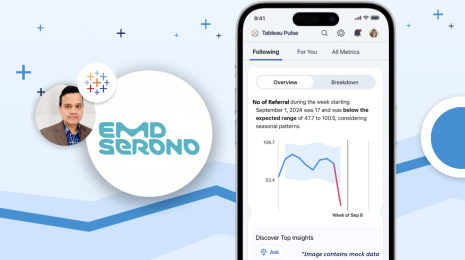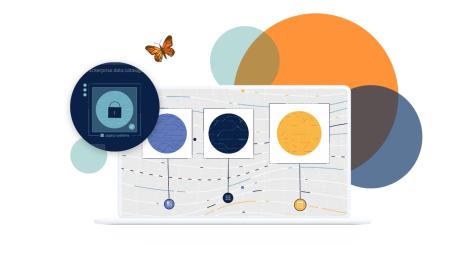Three reasons your business intelligence adoption has stalled

Originally published on CIO.com.
Today’s approach to business intelligence and analytics software favors easy-to-use, self-service-based platforms accessible to everyone within an organization. This is in stark contrast to the traditional BI model, which is built on technology that requires specialized skills and is best suited for IT developers curating data models, reports, and executive dashboards.
A similar comparison could be made to the disruptive impact that integrating a camera into a smartphone had on the world of photography. Prior to this innovation, photography was a craft with a high barrier to entry, reserved for specialists with technical skills, knowledge, and expertise gained through training. You also needed access to expensive equipment. As camera-rich smartphones proliferated society and supporting technology or apps made tasks easier and more intuitive, these barriers were virtually removed. Today, almost everyone has access to a capability that only a decade ago was considered out of reach. Now, capturing, editing, and instantly sharing your images with the world is part of everyday culture.
The dynamics of BI and photography are strikingly similar, so why haven’t we observed BI and analytics adoption following the same trajectory? The answer isn’t technology. From a product perspective, the shift has already occurred with visual analytics-based platforms clearly establishing market leadership. The reluctance to adopt BI has been, and continues to be, about workplace culture. Here are three primary reasons your organization’s BI adoption is stagnant:
The evolution of skills
People vehemently fear change. As organizations implement business intelligence solutions, certain teams begin to feel that change almost immediately.
The first is on the part of IT. In a traditional BI model, IT plays the pivotal role of supplier, and the work required to deploy and maintain a traditional BI model falls squarely on them. In most cases, the default assumption for IT is that their role will eventually be rendered obsolete. While it is true that the role of producing data models and analytic content is pushed further into the business and away from IT in a modern BI deployment, the role of IT actually becomes more relevant as an enabler. With more strategic, higher value responsibility, IT can evolve into a true business partner, equally accountable for better decision-making and improved outcomes.
The second area is with solutions-oriented business users employing unsupported tools (often spreadsheets) to build process. When these users are approached by the BI team and offered the opportunity to streamline the manual processes they are responsible for, the initial reaction is often resistance. Similar to the BI report developer who built a competency creating reports and dashboards, the business user struggles to understand what his or her new role will be if the output of their manual processes is no longer required. Investing in data literacy through training and education helps with this transition for business users and analysts who want to be part of an analytic culture, but don’t know how to start.
Reliance on instinct for decision-making
Organizational leaders set the tone for each team’s approach to BI and play a pivotal role in either advancing—or derailing—an organization’s journey towards data-driven decision-making. Leaders who default to instinct-based decision-making and rely solely on experience, rather than analytic insight, directly contribute to the poor adoption of BI in their areas.
BI leaders spend a disproportionate amount of time trying to convince instinct-based decision-makers that analytic insight beats intuition. Unfortunately, this rarely changes deep-rooted beliefs and has little-to-no impact on the use of BI. Consequently, BI teams are better served engaging leaders who understand the value of analytics and are willing and able to influence business process change. Top-down support from organizational leaders to challenge the status quo, and push for business process transformation, is mandatory for success. It will quickly become evident to senior leaders which of their key decision-makers are furthering – or hindering – the organization’s BI and analytic adoption goals.
Sunk cost fallacy: An ROI unfulfilled
For many organizations, the development of a BI solution began with good intentions: an eagerness to eliminate inconsistencies, consolidate data from disparate systems, and ensure governance and security of an organization's data assets. Typically, these initiatives launched as large-scale, top-down, IT-driven projects. Because these programs also have a well-defined start and end date, it is not uncommon for them to be considered “complete” and in “lights on” mode after they are rolled out to users. That can leave both learnings, growth, and the possibility of more success on the table. It is these organizations that struggle to understand why modernizing their strategy is necessary.
This often comes back to the lack of an overarching BI and analytic strategy, along with an underlying program to adapt and evolve the BI deployment over time. It’s important to shift from the “check-box type” mentality to one that recognizes the importance of data and analytics, and the critical role both play in a digital future. This perspective can be achieved by surfacing examples of what an organization's competitors are doing to create an analytic culture or by introducing examples demonstrating the “art of possibility” that can be achieved with analytics. The realization that modern problems can’t be solved with a traditional approach can serve as a powerful catalyst to rethink and reprioritize analytic investments.
It’s important to remember that technology is not the barrier to BI adoption, nor is it the solution. Simply buying a modern BI platform won’t independently solve the underlying issues linked to low adoption, automatically turning everyone into an analyst in the same way that the smartphone-enabled a society of amateur photographers. Rather, success lies in an organization’s ability to implement a modern strategy that covers the people, process, and change management aspects of BI critical to creating an environment that promotes data-driven decision-making. Shared goals and collaboration between IT and business, at all levels of the organization, is critical throughout the journey. And identifying the adoption obstacles will lead your organization to a place where the use of data and analytics is commonplace.
Experience our IT virtual summit
Don't miss our virtual summit to learn how to enable your users with a secure, scalable, and self-service, modern analytics platform.








